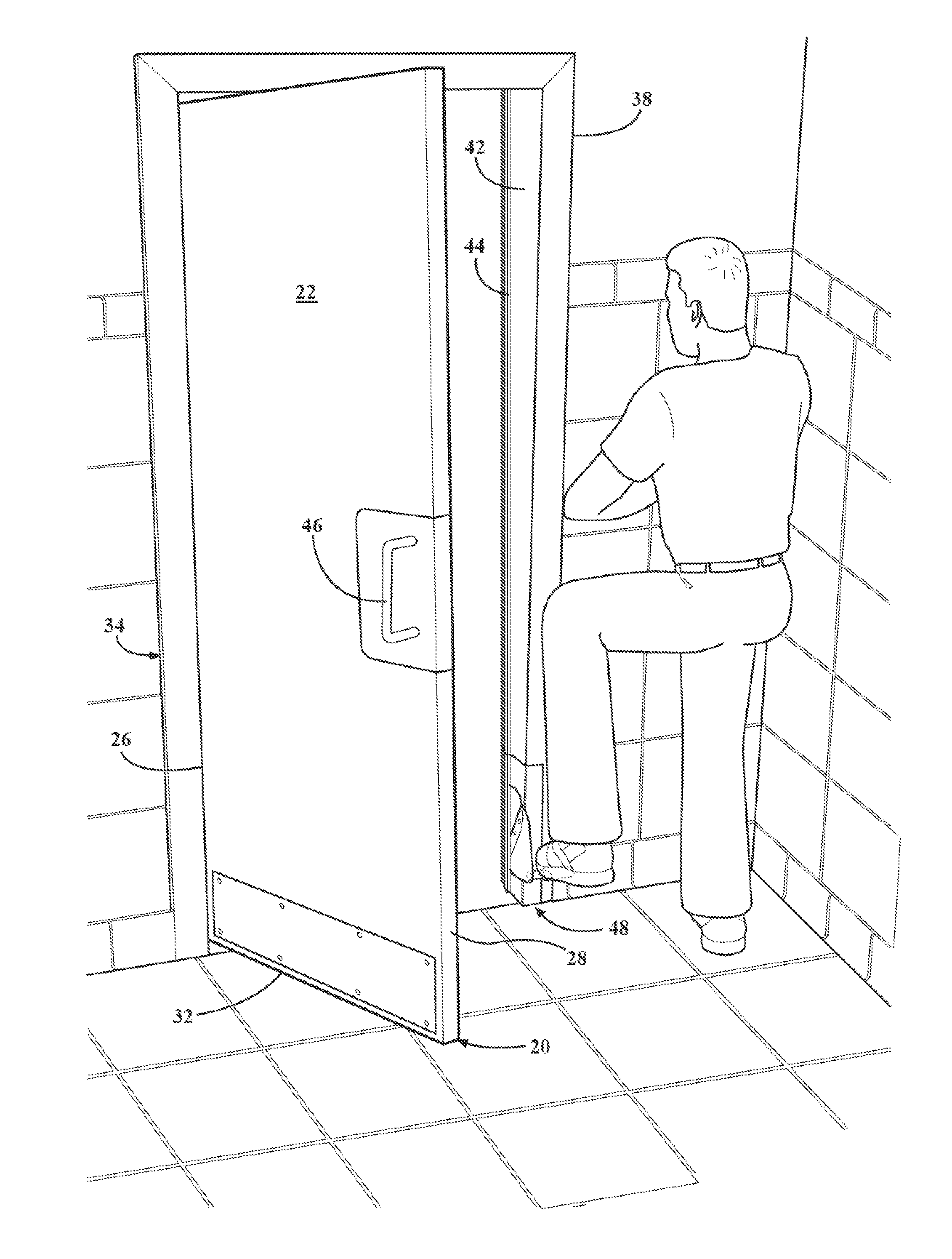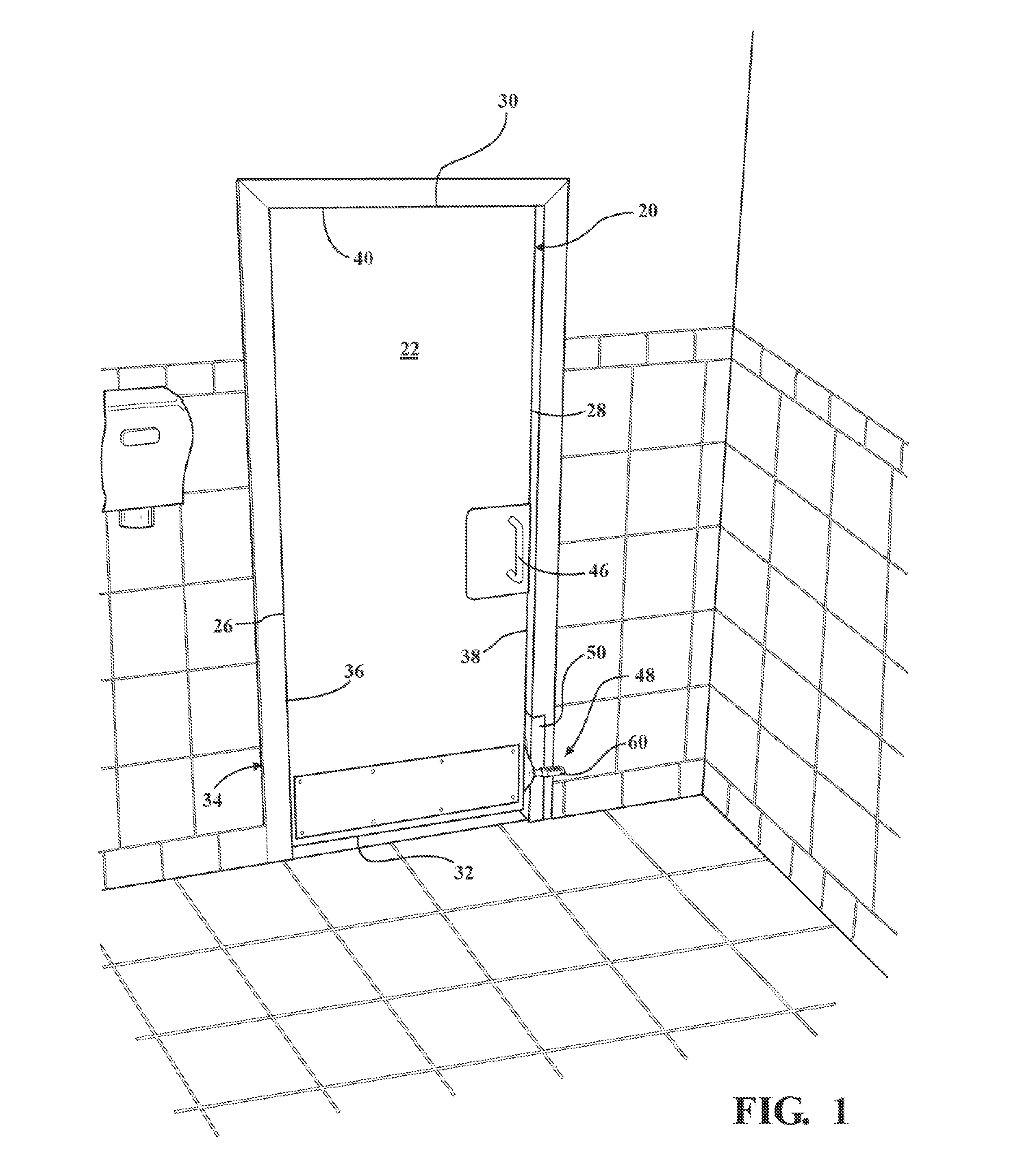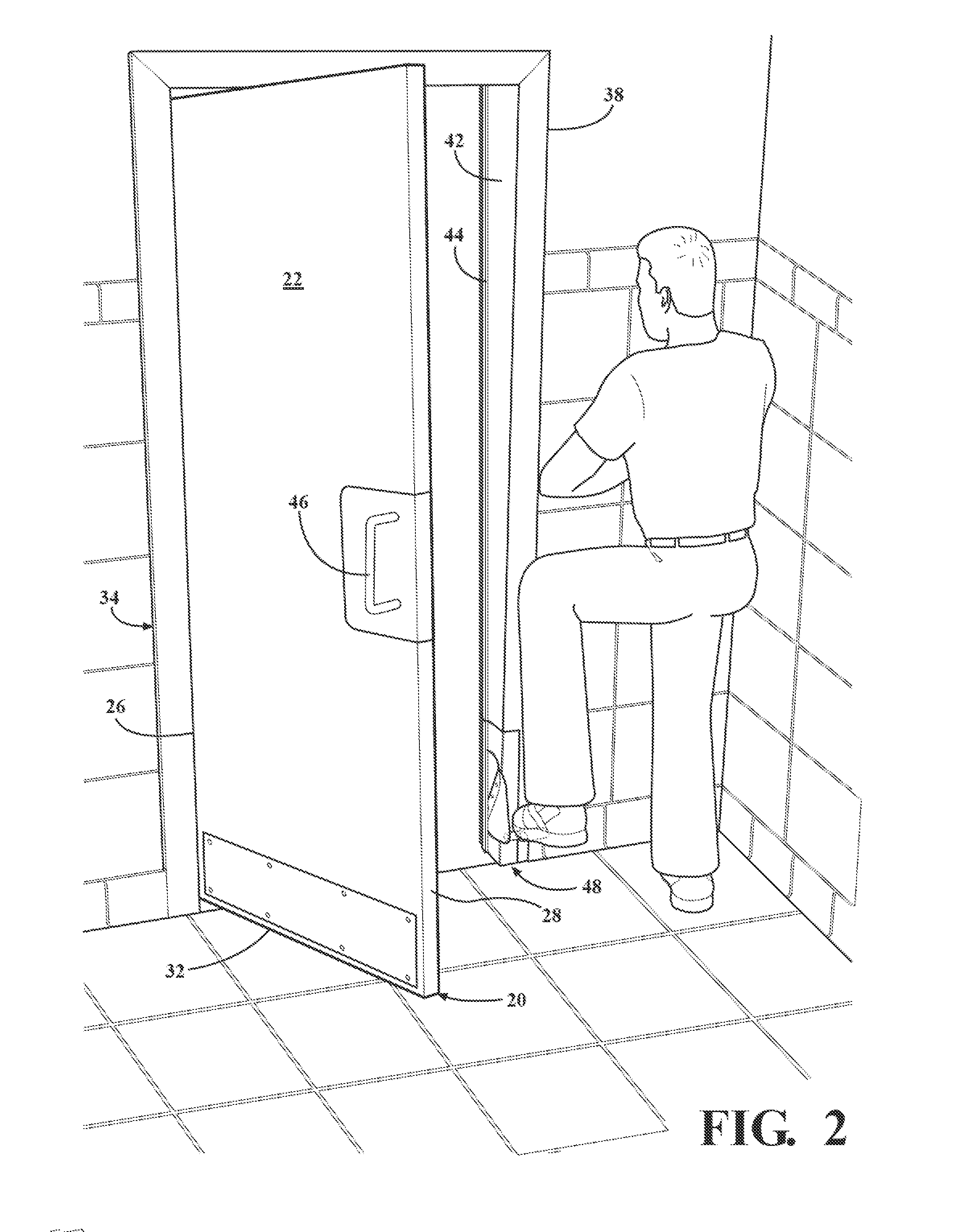Foot operated sanitary door opener
- Summary
- Abstract
- Description
- Claims
- Application Information
AI Technical Summary
Benefits of technology
Problems solved by technology
Method used
Image
Examples
first embodiment
[0037]As shown in FIG. 1, the door 20 may include a pull handle 46 so that a user can manually pull open the door 20 in the customary fashion upon exiting through the frame 34. As an alternative opening the door 20 by the traditional pull handle 46, a user may elect to open the door 20 using a foot-operated sanitary door assembly according to the present invention. the foot-operated door assembly is generally indicated at 48 in FIGS. 1-12. The assembly 48 may either be configured as an attachment feature, such as in retrofit installation applications, or integrated into a hollow door frame 34 as in commercial Original Equipment (OE) applications. Naturally, the invention can be implemented in all types of settings, including residential and non-restroom uses.
[0038]In the example of retrofit installation applications (FIGS. 1-12), the assembly 48 may include a mounting bracket 50. The mounting bracket 50 can take a variety of forms, and in the illustrated examples includes a jamb fac...
third embodiment
[0052]FIG. 16 represents a fourth alternative embodiment of the present invention. For convenience, features corresponding to those described in connection with the third embodiment are identified by like reference numbers offset by 200. In this embodiment the linkage 262 is re-engineered to translate the actuator 272 rather than pivot it between retracted and extended positions. Although several different mechanical arrangements could be used to accomplish this conversion of vertical pedal 260 motion to horizontal strike pad 274 motion, contemplated methods include a rack and pinion system and a cam slider system. In both contemplated systems, the actuator 272 is supported on a horizontal sliding track. A rack and pinion system could include the formation of a rack gear on each of the foot pedal 260 and actuator 272, with a pinion gear simultaneously engaging both rack gears. A cam slider system, by contrast, cold include the formation of an angular cam slot in the actuator 272, wh...
PUM
 Login to View More
Login to View More Abstract
Description
Claims
Application Information
 Login to View More
Login to View More - R&D
- Intellectual Property
- Life Sciences
- Materials
- Tech Scout
- Unparalleled Data Quality
- Higher Quality Content
- 60% Fewer Hallucinations
Browse by: Latest US Patents, China's latest patents, Technical Efficacy Thesaurus, Application Domain, Technology Topic, Popular Technical Reports.
© 2025 PatSnap. All rights reserved.Legal|Privacy policy|Modern Slavery Act Transparency Statement|Sitemap|About US| Contact US: help@patsnap.com



